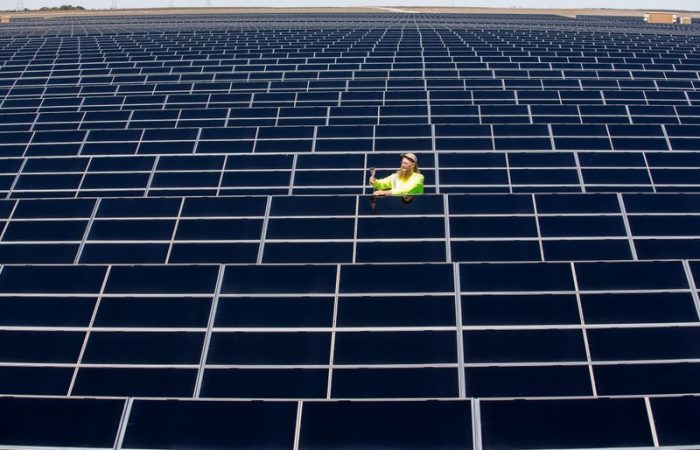
A maturing solar PV industry will have to take the necessary measures to ensure maximally efficient plant operations. One of the most serious handicaps that’s quietly holding back the solar sector isn’t lack of innovation or inefficient technology. It’s the accumulated energy loss from certain key parts breaking down, especially early on in a solar plant’s life.
Limiting energy losses is an important focus for plant owners and operators, and one which will require a rethinking of the servicing norms of the industry.
Energy losses is a broad term and includes a number of different faults. For the most part, however, energy losses result from, or are exacerbated by, delays in servicing. Inverters are a perfect example, since in a plant’s life, inverter failures cause the majority of energy loss. According to 2021 data collected by NovaSource’s SunStreams platform, in fact, invertor faults represented all of the top four most common issues recorded at PV power plants.
A more productive division of labor
In those early years, the original manufacturer (OEM) is typically on the hook contractually to identify and fix the inverter’s issue. That’s despite the fact that sending technicians out into the field delivering that crucial service, all over the country or even the world, including to distant rural areas, is not part of most manufacturers’ core business.
Through our current contracting norms, OEMs are being overwhelmed by field servicing tasks. For them, these are costly and impractical to perform at scale, and put very expensive labor demands on manufacturers, pulling resources and attention from their core business. A simple way to think about improving the effectiveness of solar PV servicing is to ensure that it is managed by those who are best suited for the job.
Maintaining solar plants and their component parts is exactly what specialized operations and maintenance (O&M) does. So the alternative is right there on the ground – the expert operations and maintenance staff already managing the plant – but our servicing norms dictate making a manufacturer provide the guarantee themselves.
Changing norms calls for trust
To ensure the long-term viability of plants, it is imperative that our industry rethink these mismatches before they cause further material losses and hamper the sector’s ability to scale. What will it take to shift such norms, enabling OEMs to focus on their core competencies and allowing more cost-effective, appropriate parties to handle post-sale servicing?
The main requirement is trust. Operations and maintenance providers must be able to demonstrate the needed expertise and track record, in fixing inverters during the warranty period, for example. O&M already has the advantage of being on the ground, so will be faster. That solves the central problem of energy loss since they can get the inverters back online more quickly. Now, though, they must also be trusted to do the job properly. And they will be, where they can show the capacity to deliver the work, along with the cost savings resulting from restored energy production.
The impact of advanced O&M
The last several years have seen both a sharp increase in innovation in solar operational and maintenance services and the growth of independent O&M providers, which typically service a wide range of plants belonging to multiple owners. (My company alone, NovaSource, manages 20 gigawatts of solar capacity for a range of different owners and investors.)
These developments have led to significant advances in data analysis, since O&M providers servicing multiple plants can analyze and learn from much larger data sets. They have also resulted in more effective predictive preventive maintenance practices, and ultimately more reliable energy returns.
One striking case is the application of autonomous aerial vehicles to collect overhead thermal imaging data for plant inspection. Such technology can help quickly and easily identify hotspots on modules, string faults and connection issues.
These advances have positioned O&M providers to service plants and their component parts ever more effectively, with a particular focus on the long-term health of the plant. That means the first years and well beyond. Allowing such operational and servicing experts to take the reins right at a plant’s conception has in fact proven to reduce the likelihood of mistakes being made early on that can affect long-term energy output.
Realigning contractual norms based on facts and data
A rethink by independent power producers (IPPs) of post-sales servicing would have clear benefits. A more calculated approach to handing over projects could also prove to be a major catalyst in terms of further cutting costs and increasing energy returns in the space. Since O&M providers are better situated today to take over such post-sale servicing on behalf of manufacturers, they should equip IPPs with the data they need to adjust their contracts from the start.
When plant owners or investors understand the financial impact of the energy loss they stand to face in their early years of operation, simply from delays in servicing, they will be able to make smarter choices, even adapting contracts to reflect more effective divisions of labor.
The solar industry must start considering adaptations like these to solidify its position as a baseload energy source. Ultimately, what will push the industry – and in turn the energy transition – forward, is ensuring that all the players in the ecosystem can focus on and fine tune their own individual processes. Not only will that allow costs to continue to fall, but it will be essential for solar to establish itself as a reliable source of power.
The technological innovation and specialization we are seeing in the solar PV O&M space suggests that the industry is moving in such a direction. These trends should also drive a more logical and functional split of the workload that will unlock further growth, and in turn, benefit everyone involved.
Timo Moeller, President International & Head of Europe, NovaSource Power Services.
— Solar Builder magazine
[source: https://solarbuildermag.com/news/how-to-stop-solar-plants-from-losing-energy/]

Leave a Reply
You must be logged in to post a comment.